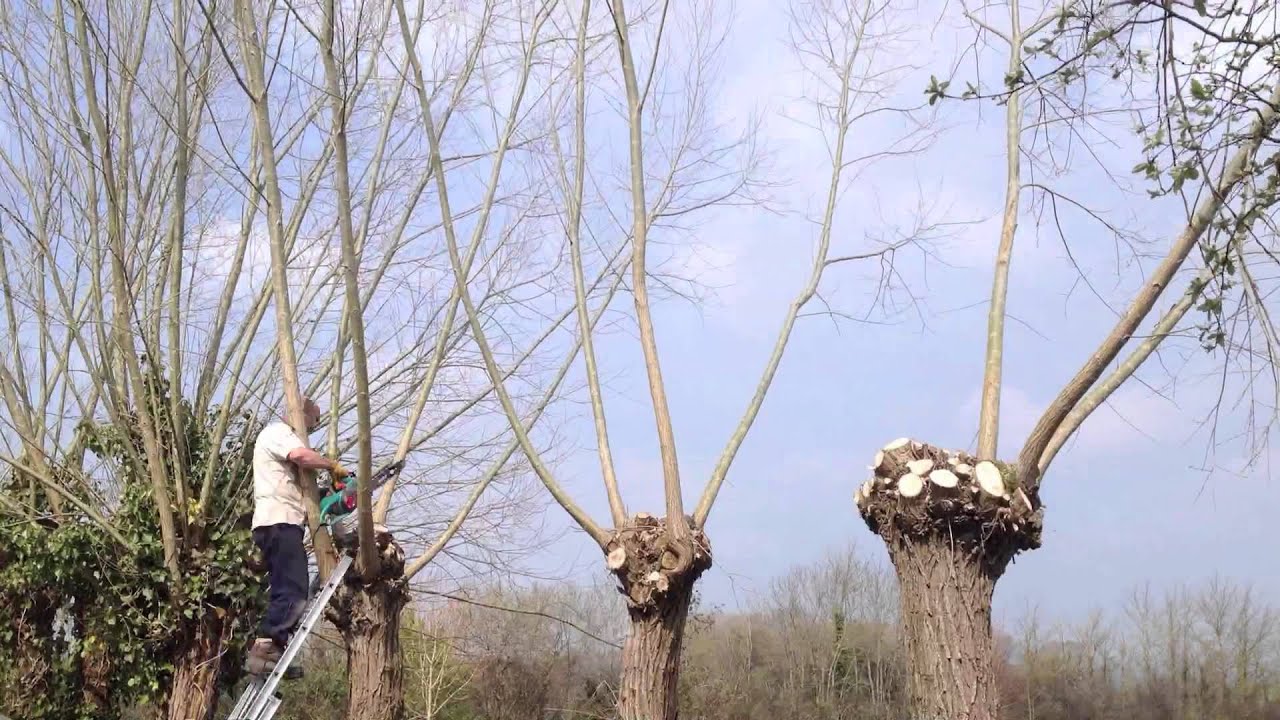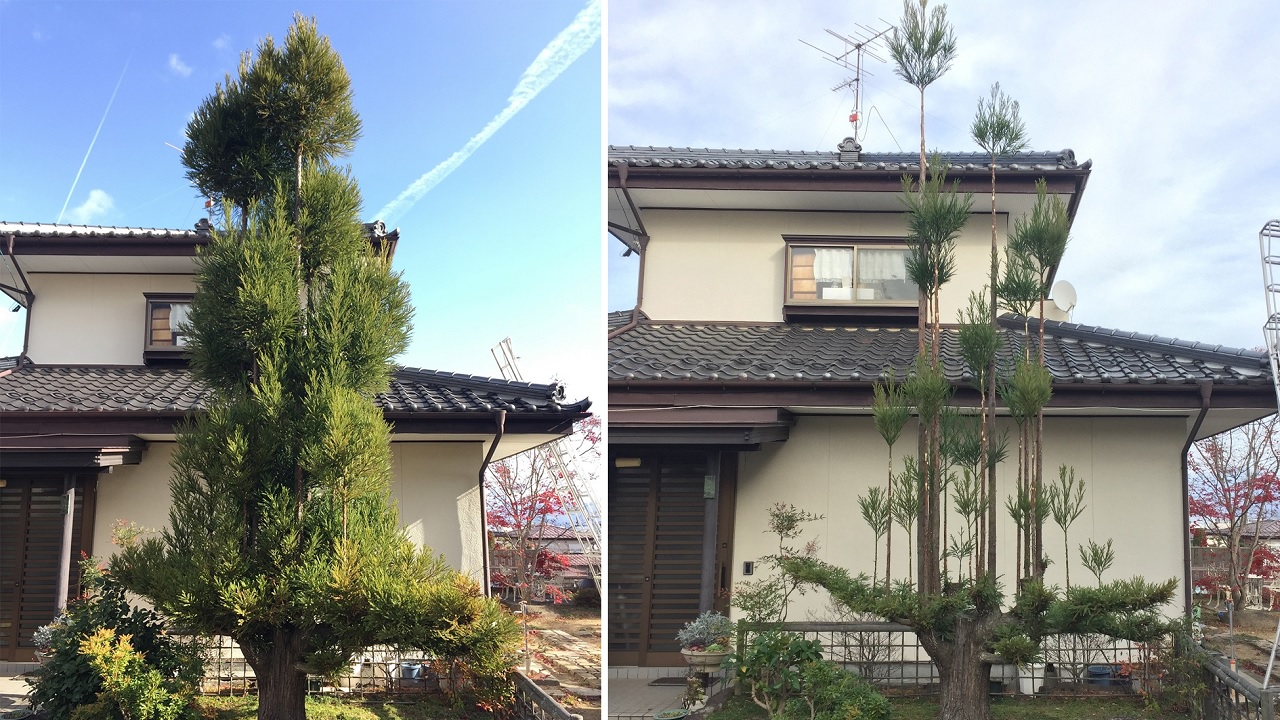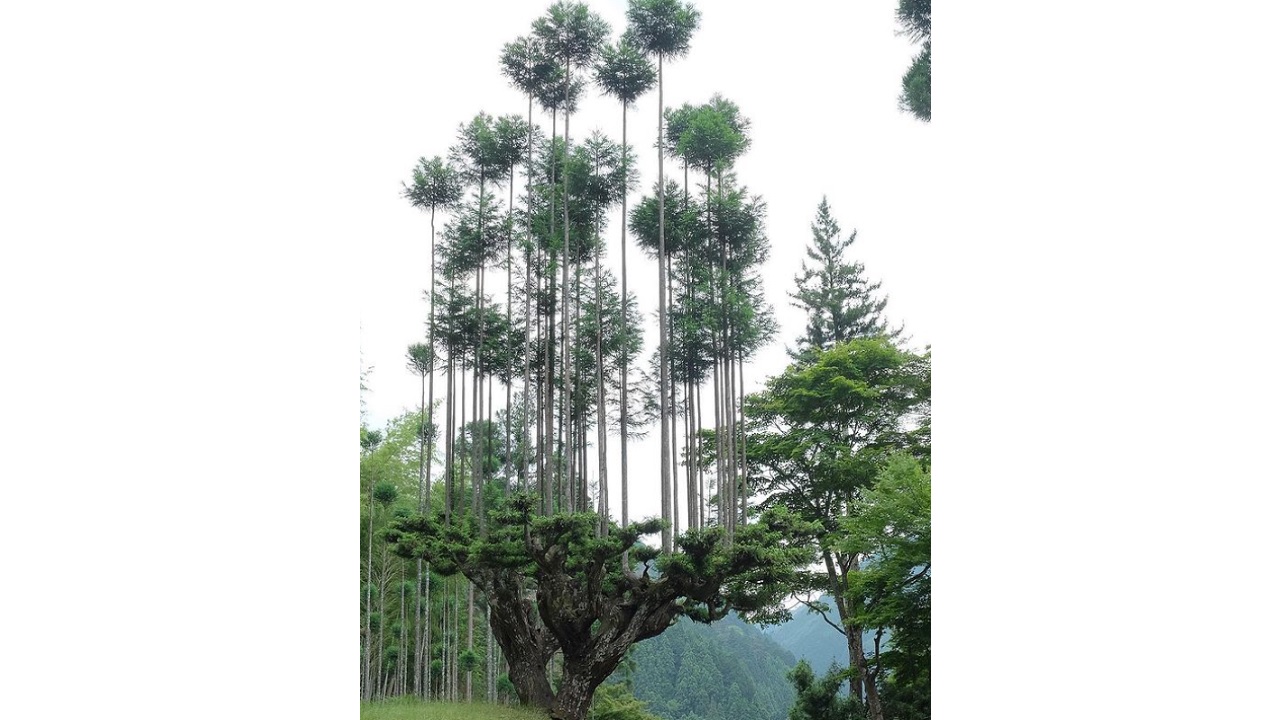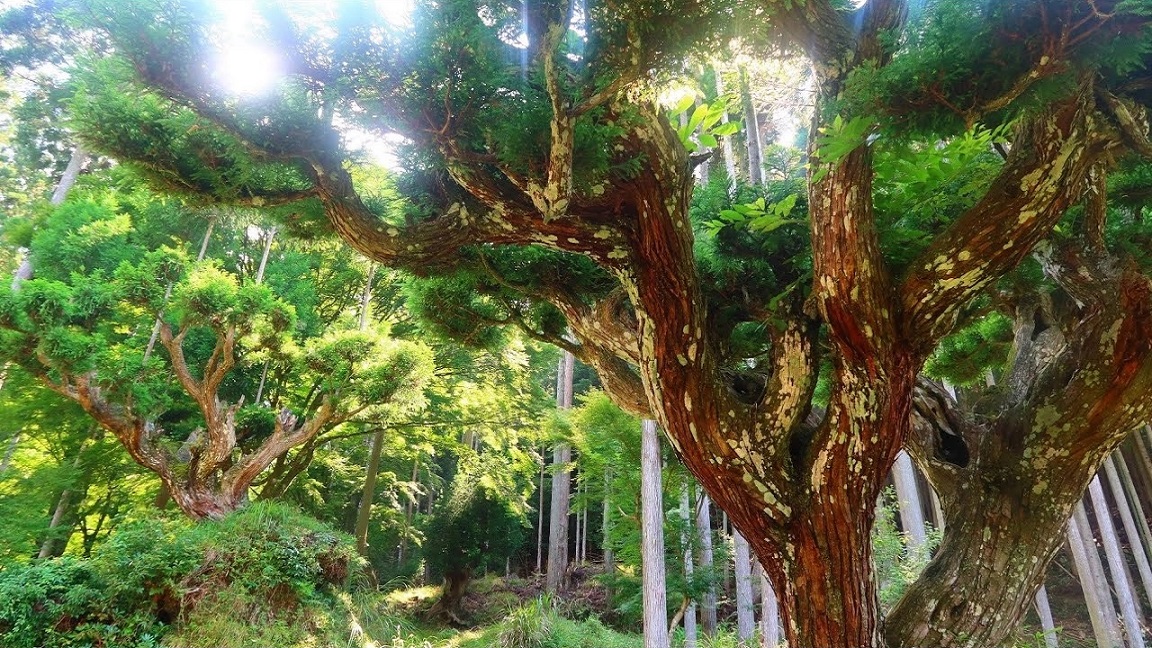When we cut down a tree for whatever purpose, we kill it and we cannot use it again. What if we could get wood and lumber without killing the tree, just like picking fruit? This is possible with the daisugi technique that the Japanese have practiced for hundreds of years. Moreover, the wood obtained is much more flexible and stronger.
In addition to being the oxygen stores of our world, trees are also used as raw materials and fuel for many goods and products. When you cut down a tree for timber or to burn it, you kill it and therefore cannot use it again. But With the daisugi technique that the Japanese have practiced for hundreds of years It is possible to get the wood of that tree without killing it.
A tree that is carefully pruned using the Daisugi technique gives wood from time to time, just like a fruit tree. When you cut new pieces of wood with the same technique and care and spray the tree just like a tree that has given its fruit, it finds a chance to grow again and give new wood. Let’s take a closer look at the daisugi technique, where the Japanese have been making wood from tree for hundreds of years.
Countless trees are cut down every day in the world for various reasons:
Although it changes every day, according to the last known figures 31% of our world consists of forest areas. It is estimated that around 15 billion trees are cut down around the world each year. Of course, most of them are not cut arbitrarily, but for the use of raw materials.
It is enough to look around to get the answer to the question of why we cut trees. We use countless wooden products, paper products are obtained from wood, timber is the basic material of constructions; In other words, wood is a material that we need in every field. Of course, with the development of technology, alternative materials have been produced, but even the most basic fuel material, for example, is still wood.
So what is the daisugi technique from tree to tree?
Since some geographies are rich in wood just like our country, they do not have any problems with wood raw materials. But consider Japan. It’s a tiny island anyway. A small part of this island is forested. They developed a technique called daisugi, as if they had to cut down a tree for each wood they needed, they would soon have to destroy all the forests.
For Daisugi, we can call it the technique of getting wood fruit from the tree or getting a tree from the tree. With this technique, which is thought to have been developed in the city of Kyoto, Japan in the 15th or 16th century. Just like pruning the bonsai plant, the branches at the top of the tree are cut and since the root of the tree remains stable, new branches have the chance to grow and obtain new wood.

How to do the daisugi technique, which is very laborious?
The daisugi technique is applied to Japanese cedar trees. As for the size of being used as residual wood Like a bonsai tree, pruning the top branches of a tree without touching the root specially cut. Although the tree does not die, it is ensured that it continues to live by using special medicines and being carefully cared for because it is injured.
The tree, whose upper branches have been cut, is regenerated after a period of time that varies depending on the thickness of the desired wood. it produces new branches. These branches are cut by applying the same technique and the tree is taken into care. Don’t be fooled by what we call a branch, some of these tree pieces can be the size of an adult tree.

Good, but why is the daisugi technique applied, what is the benefit?
A cedar tree essential for quality lumber will take decades to grow. After waiting that long, you cut down the tree and get the timber, but a when we do a labor benefit analysis shame on the beautiful tree. In the Daisugi technique, you can get the same yield from more than one tree approximately every 20 years from the same tree.
Even more interesting are the fruit trees taken from the daisugi-treated tree. It is 140 percent more flexible and 200 percent stronger than a regular cedar wood. Because a tree can be damaged until it reaches the size to be cut, but since the main trunk of the tree is not damaged in the daisugi technique, the new branches that come out each time are the freshest and strongest.
There is no need to even discuss the economic aspect of the matter. A tree can be cut not just once, but many times. Moreover, since a tree can grow more than one branch when it is cut with the daisugi technique, you can sometimes get a yield from the tree that has been cut many times as if you had cut a tree close to ten. So no matter where you look at it, it’s an extremely efficient technique.

Unfortunately, the daisugi technique also has disadvantages:
When we think about it, the daisugi technique sounds incredibly beautiful; the tree does not die, the economy gains, productivity increases; good but to be able to re-cut a tree cut with the daisugi technique You have to wait at least 20 years. Yes, it is much more efficient than waiting 20 years and cutting a tree completely, but think about it, how many trees does humanity need per year?
Yes, maybe hundreds of years ago, everything was made of wood and In times when your need was funny compared to today The daisugi technique can be extremely efficient. But when we consider today’s conditions, it will be insufficient. Of course, if a tree is to be cut, it would be best to cut it with the daisugi technique.

What should we do if we don’t cut trees?
Removing the tree from our lives as a fuel will be the first step. Thanks to alternative energy sources anyway, now burning wood becomes the farthest option. Using nature-friendly and long-lasting materials in products made using wooden materials will reduce tree cutting to a minimum.
Of course, the most important are trees that are cut down for toilet paper, handkerchiefs, napkins, paper and the like. Instead of conventional trees, we can use products from easier growing and more productive plants such as hemp and bamboo. Another important step is to increase recycling. Since the products we see on the shelves as Eco are made from recycled paper, they are both more affordable and more environmentally friendly.
Of course, the main responsibility actually falls on the management. Measures should be taken against illegal cuts, zoning permission for forests should be considered a crime, Precautions for forest fires should be taken to the extreme and even severe punishments should be given to those who cut down trees by imitating the Code of Hammurabi.
Used by the Japanese for hundreds of years to get wood from wood. What is daisugi technique, how to do it We answered frequently asked questions such as: We have arrived in the 21st century, indeed, there is always a way to live without cutting down a single tree.
